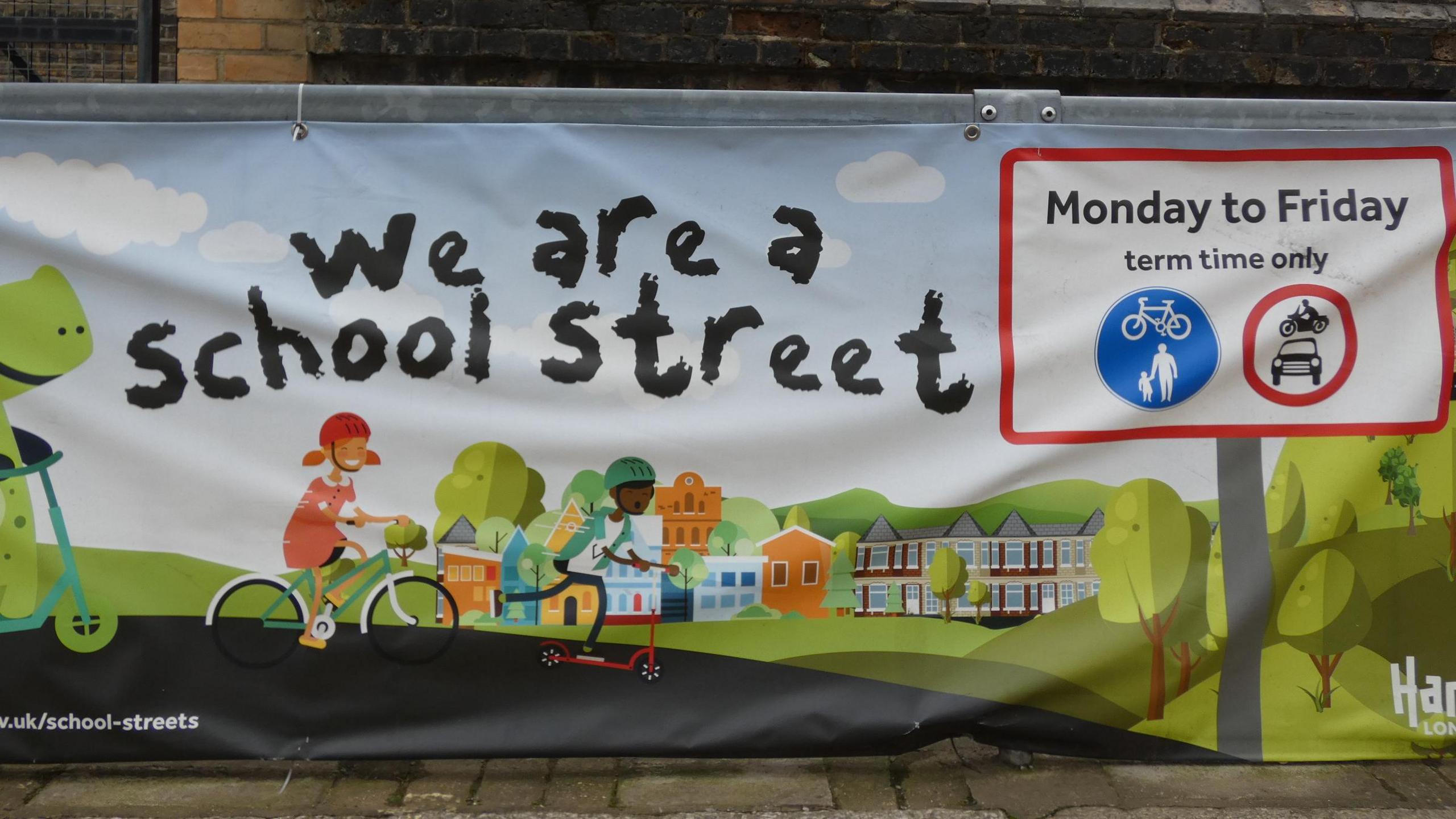School Streets to treble in north London borough

The new School Streets will cover 13 miles (21km) of the road network
At a glance
Haringey Council has announced it will introduce 38 new School Streets by 2026
It already has 23 zones in operation during school start and finish times
The council said the school run makes up 25% of all traffic in the borough
The new traffic restrictions will expand coverage to 13 miles (21km) of roads
- Published
The number of School Streets in a north London borough will almost treble in the next three years.
Haringey councillors approved plans for 38 new zones at a meeting on 13 June, meaning most vehicles will be banned on streets outside those schools during drop-off and pick-up times.
It will bring the total number of School Streets in the borough to 61.
Mike Hakata, deputy leader of the council, said: "The evidence is clear that children benefit from being able to walk, wheel or cycle to school in cleaner air and safer streets."
He said the school run made up about 25% of all traffic in the borough.
Haringey's current School Streets programme includes 23 zones spanning 3.7 miles (6km) of roads during school start and finish times.
The newly approved plans will expand this to 13 miles (21km).
Only those who walk, cycle or have vehicle exemption permits are able to enter the zone while the School Street is in operation, with the restrictions enforced by traffic cameras.
From September 10% of staff at each school will be able to apply for formal exemptions.
Mr Hakata said: "For those without access to a car, which in our borough is the majority, getting to and from school is the most dangerous time of the day.
"School Streets both reduce road danger and incentivise healthier ways to get to school."
Haringey Council reported that nitrous oxide vehicle emissions were down by 26% where its current schemes are in place.
It has 31 schools on main roads where it cannot introduce the scheme.
Instead, it will create "healthy school zones" with extra tree planting and "green screens" to improve air quality around the schools.
Additional reporting by Simon Allin, Local Democracy Reporting Service.
Follow BBC London on Facebook, external, Twitter, external and Instagram, external. Send your story ideas to hellobbclondon@bbc.co.uk, external